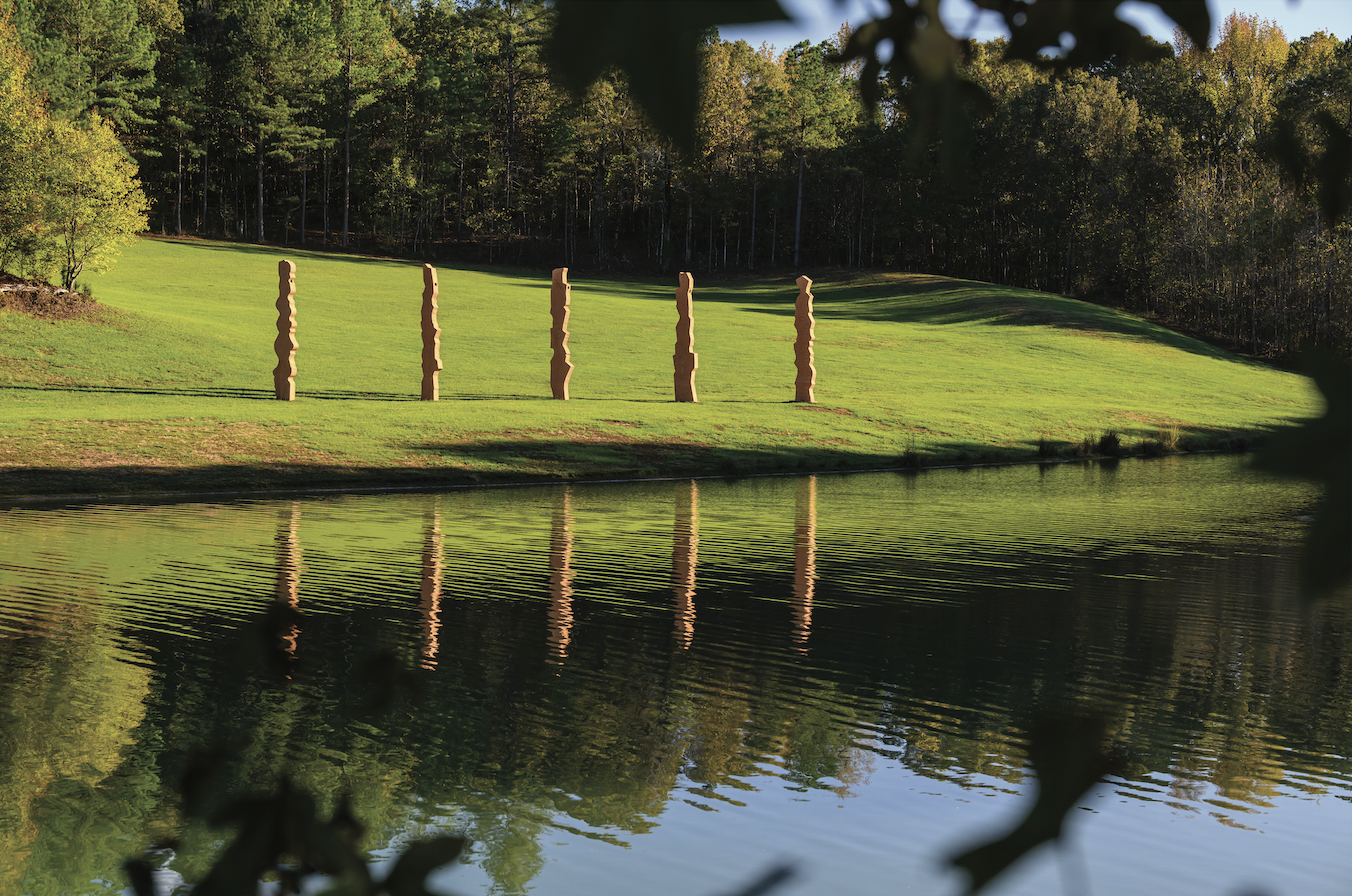Fertile Ground
At Splinter Creek in North Mississippi, a family has crafted more than a development—they’ve shaped a community grounded in intention, artistry, and stewardship of place
By Blair Knobel
A few days before my maiden journey to Mississippi, a swath of spring storms tore through the Deep South. I delayed my trip a few days before driving west through a bullying headwind. I knew the drive would be worth it. There are divine moments when we feel connected to a place, or at least drawn to it, because of its location and its story. Splinter Creek, my destination in the state’s northern pines, drew me in from its first mention.
Splinter Creek is a special community—hugged by Oxford, famous for Faulkner, Ole Miss, and John Currence’s award-winning restaurants—and a sweet town called Taylor, the kind of place with one stoplight and a thousand stories.
As I approach a gate flanked by a gabion stone fence, founder Ellen Leake greets me as warmly as family. She mentions that I share the same name as her first-born daughter, and we hit it off immediately. Ellen leads me along a gravel road to a stunning lake-front property called Old Cedar Cove. As we walk through the home’s hefty front door, sunlight bounces around the glassed-in living room, and I take in an elevated view of pristine woods and the lake just beyond. The home’s ethereal design features a balance of screened-in living spaces and wall-to-wall windows, and for a moment I think I’ve left the Earth.
Interior of Old Cedar Cove; photograph by Sarah Voigt
So begins my experience at Splinter Creek, a lifestyle community with a focus on sustainable development tucked into the North Mississippi woods, a vision realized by Ellen Leake and her husband, Eason. The Leakes are the embodiment of Southern gentility and contemporary style. Their shared interests in art and architecture, merged with the rustic and craft culture of their native South, led them to found Splinter Creek.
This is a story of preservation. It is also one of connection: to family, to nature, and to community. Back in the 1990s, Ellen and Eason purchased 650 acres near Oxford as a timber investment. But the more they interacted with the land, the more they were drawn in by its quiet beauty. The Leakes decided to restore the acreage to its native essence and build their own home here, a contemporary boathouse designed by the Texas-based design firm Lake Flato. “We are accidental developers,” jokes Ellen. “After we moved into our boathouse, Eason said, ‘Neighbors are the only thing missing.’ We broadened our perspective and created Splinter Creek around 2016–2017. We took the name from the timber tract which is close to the extinct town of Splinter.”
Their neighbors now include 26 properties and 33 lots between 2–25 acres to allow for quiet and privacy. Home designs complement the topography of the land, essentially becoming part of its character rather than detracting from it. As the Leakes considered how to shape their surroundings, they were inspired by other communities created with intentional placement, architectural harmony, and sustainable design. Ellen notes, “Calistoga Ranch in the Napa Valley influenced our early thinking about how to live lightly on the land—the rustic beauty of the forest and surrounding environment blended with structures having a serene color palette with wood, natural finishes, and accents, bringing the outside in and vice versa.” To realize their vision for Splinter Creek, the Leakes have assembled a renowned team of architects and design firms.
“We wanted to have a place disconnected from the rest of the world.”
In 2020, the pandemic accelerated their business, as families sought to escape and shelter in nature. During this time, Ellen’s two daughters and their families decided to invest in their own properties at Splinter Creek. Elizabeth, the Leakes’ younger daughter, now works full-time as the company’s director of sales. “We wanted to have a place disconnected from the rest of the world,” she says. “Splinter Creek will always be a refuge—sitting by the water, hiking amongst the deer and turkey, and listening to the cicadas chirping at night really quiets the mind.”
Thomas Sayre, Creek Dancers. Earthcast reinforced concrete with iron oxide color, 2024; photograph courtesy of Splinter Creek
“It’s personal to us,” Elizabeth continues. “This is our home, and we’re developing and nurturing this land with the hope that it will be our multi-generational gathering place. We see our role more as stewards of the land than as developers, and our investors and early adopters celebrate that vision.” Ellen adds, “I think we feel fortunate in having landed where we are. As in so many things, it’s the journey not necessarily the end point.”
Contemporary architecture closes the gap between our interior self and exterior world. In a sense, this type of design relishes the resonance of emptiness, allowing nature to speak. It’s a kind of co-creation—and once we experience it, the peace that follows is profound. V
Find out more about Splinter Creek at splintercreekms.com.






